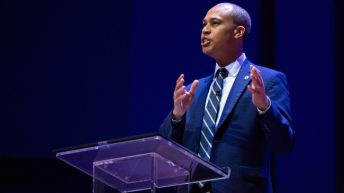This piece lays out clear, model-driven predictions for the three high-profile 2025 races—New Jersey governor, New York City mayor, and statewide Virginia contests—explaining polling context, candidate strengths and weaknesses, money dynamics, and likely outcomes from a Republican perspective.
New Jersey’s governor contest between Democrat Mikie Sherrill and Republican Jack Ciattarelli is tight and competitive based on a mix of polls and political fundamentals. The RealClear average shows a small Democrat edge, but several reputable pollsters have the race within one to two points, which matters in a state where margins are often thin. Sherrill has struggled as a candidate and the state-level dynamics mute the typical Democrat advantage you see in federal races. Ciattarelli benefits from favorable fundamentals, rising GOP registration, and the fact that when voters are looking to punish the party in power, the out party often collects undecideds and no-shows.
Money is abundant and messy in this race, with both campaigns spending heavily and outside groups pouring tens of millions more, giving Democrats a cash edge that is real but not decisive. Sherrill has spent $16.6 million and holds $4.1 million, while Ciattarelli has spent $16.4 million and has $3.5 million left; allied spending still tips toward Democrats by a substantial margin. Despite that, the polling tightening, respected trackers flagging a near dead heat, and the cyclical pattern of partisan change in New Jersey suggest an opening for Republicans to take a narrow victory.
Putting these factors into a data-driven model that weights polls, fundamentals, turnout, and money, the likely outcome is a narrow Ciattarelli win, possibly by a plurality rather than a clear majority. That projection recognizes the Democratic financial advantage but credits the GOP for momentum among undecideds and a candidate who benefits from state-level voter sentiment. Expect a winnable margin for Republicans, not a landslide.
New York City’s mayoral picture is chaotic and ideologically charged, featuring Zohran Mamdani, Andrew Cuomo, and Curtis Sliwa in a race that still looks favorable to the Democrat despite vulnerabilities. Polling shows Mamdani with a meaningful lead in several averages, but some high-quality polls tighten the race and put Sliwa within shouting distance. Mamdani’s record contains multiple lines of attack for opposition research, including past comments about “seizing the means of production” and troubling positions on extremist actors, yet those liabilities have not been fully exploited by opponents in paid media.
Cuomo’s candidacy remains damaged by a long history of scandals and poor campaign execution, and Sliwa’s outsider brand lacks the broad, moderate coalition that once elected business-backed mayors. New York City’s overwhelming Democratic registration and the public financing system favor an energized left-leaning candidate who can mobilize base voters and outside spending. Billionaire spending and targeted ad buys against Mamdani may reduce his lead, but that alone does not appear enough to flip the race.
Given the city’s partisan lean and the imperfect opposition effort, the model points to Mamdani winning with a plurality and a slimmer margin than some polls suggest. This is the kind of result that will fuel Republican messaging for 2026, offering ample material to criticize extreme left policies while setting up future contests where a better-organized GOP could convert suburban and swing constituencies.
Virginia’s statewide fights for governor, lieutenant governor, and attorney general show different dynamics but a common thread: Democrats have advantages in turnout and registration, yet Republicans are mounting strong closing efforts. Abigail Spanberger leads in the RealClear average and sits above 50 percent, which is a strong sign for Democrats in a state that has trended that way due to federal-government growth and demographic shifts. Nevertheless, Winsome Earle-Sears benefits from a late surge in advertising and significant outside spending aimed at narrowing the gap.
Ticket dynamics create noise in Virginia, with scandals and October surprises reshuffling voter perceptions, but those have historically had mixed effects on top-of-ticket races. The attorney general race tilts Republican after successful October tactics and sustained polling leads for Jason Miyares. Meanwhile, the lieutenant governor contest remains competitive, with an unfunded GOP candidate punching above his weight against Democrat Ghazala Hashmi.
Feeding all of that into the predictive model leads to a forecast where Spanberger wins the governor’s office by a solid but not overwhelming margin, Ghazala Hashmi narrowly captures lieutenant governor, and Jason Miyares ekes out a second term as attorney general. These outcomes reflect current polling, spending shifts, and the usual midterm dynamics that penalize the president’s party in off-off year contests in some states.
Across these three battlegrounds, Republicans should take heart where they can and prepare for hard fights where they cannot. Strong targeted messaging, disciplined turnout operations, and sharp opposition research will matter in tight places like New Jersey and Virginia; in cities like New York, broader cultural and demographic forces make change harder but not impossible. The short window before Nov. 4 favors campaigns that can translate models and data into effective ground games and persuasive paid media.





Add comment